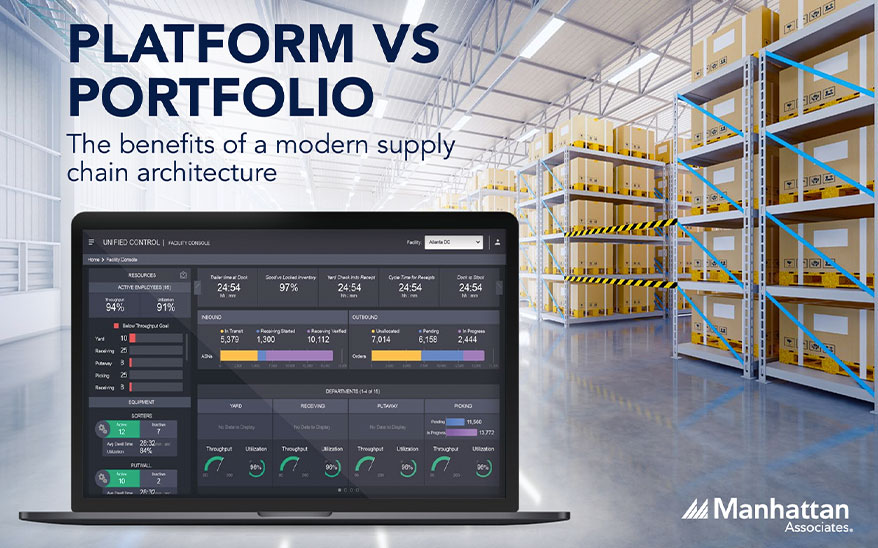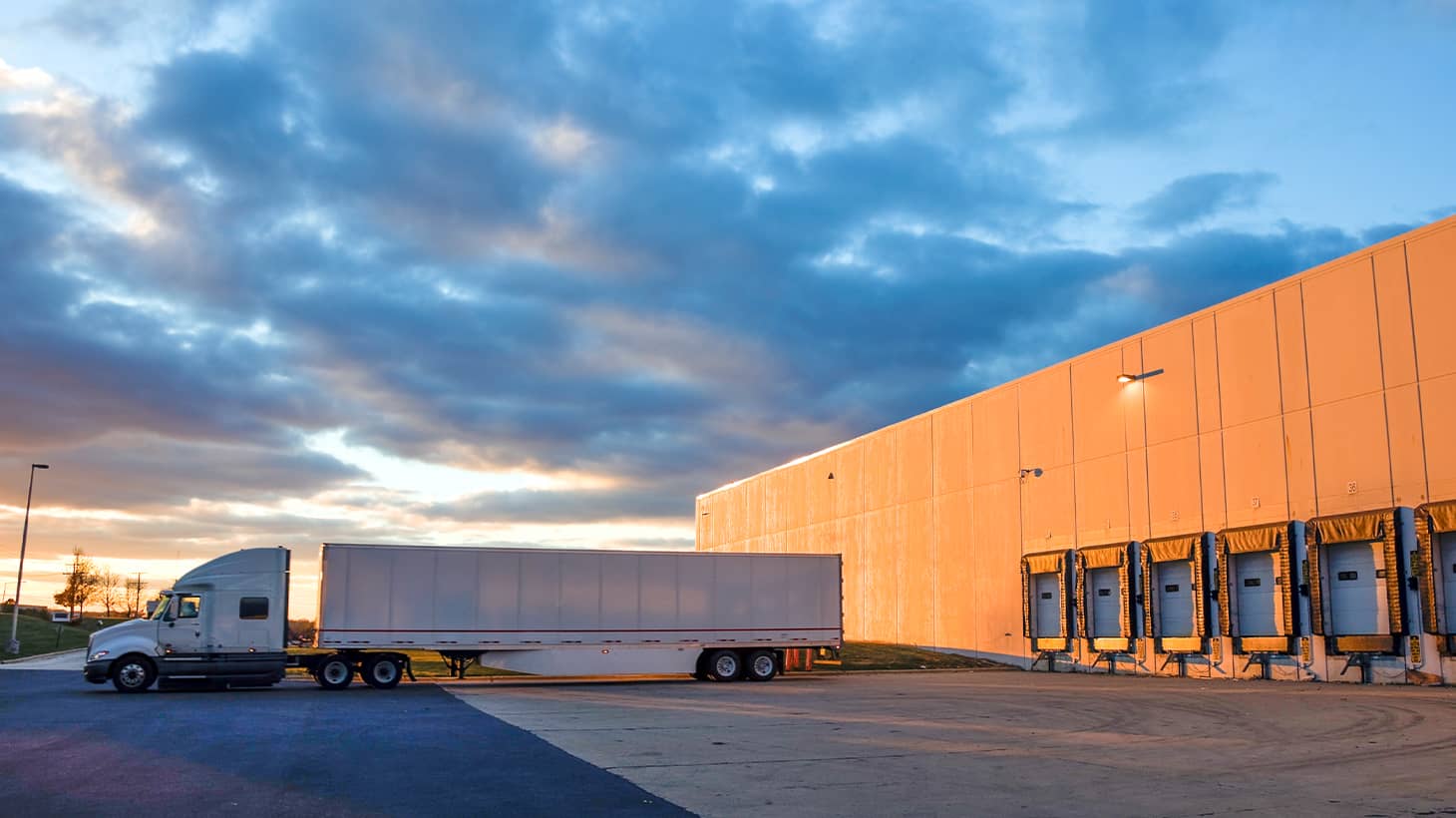Yard Management: Mastering the Crossroads of Supply Chain Efficiency
Everything you need to know about yard management, including what yard management is, the definition of yard management, yard management components, yard management benefits and examples, yard management challenges, and the best yard management systems for supply chain optimization.
A Vital Intersection in the Supply Chain Management Process
The modern supply chain landscape has been markedly transformed by the surge in ecommerce, a trend significantly accelerated by the pandemic. Today's consumers have evolved, now expecting immediate visibility into online inventory with flexible fulfillment options. Whether it's in-store pickup or home delivery, customers anticipate a seamless and swift transaction, reflecting a substantial elevation in service expectations. This shift demands retailers adapt with agility to meet these growing needs efficiently.
According to the Unified Commerce Benchmark for Specialty Retail, 60% of shoppers value expedited delivery, highlighting an opportunity for retailers to perfect the promising and fulfillment portion of the supply chain where ecommerce fulfillment is powered by logistics.
But it’s not just retail customers whose demands are growing; new efficiencies and capabilities in supply chain management and transportation technology place expectations on grocery, food distributors, pharmaceuticals, manufacturers, wholesale, and other industries to get products to their desired locations fast and easily. This requires supply chain management to be one cohesive process with optimal visibility for customers, drivers, warehouse workers, and operation managers alike.
At the crossroads of inbound/outbound processes lies the yard, the apex point in the supply chain process where warehouse operations pass the baton to transportation networks to move products or goods to an end destination. This convergence of supply chain management operations is a key moment in the overall product journey and, if done optimally, can provide efficient performance optimization, unobstructed visibility, and cost-saving opportunities—all made possible by the right yard management software.
What is Yard Management?
Yard management is the act of planning, controlling, organizing, and guiding vehicles, containers, and other methods of transport to the optimal dock or location in the yard of a distribution center or warehouse to efficiently move goods from the warehouse to the point of transportation. When executed properly, it optimizes the flow of vehicles and cargo within the on-premises yard.
Yard management technology is often less valued than warehouse or transportation management systems yet is a critical component of achieving streamlined operations between the two. Yard Management Systems can be made available as an add-on feature by some WMS software vendors or as a third-party application from another independent software vendor. However, when unifying all warehouse, transportation, and yard management systems together through one unified platform, significant beneficial business outcomes occur.
What is a Yard Management System?
A yard management system is a software application that controls everything in the yard of a warehouse or distribution center. It enables businesses to optimize the process of moving trailers, containers, and other vehicles to the optimal location in the yard for inbound/outbound processing through real-time visibility and technology capabilities.
What are the components of yard management systems?
The best yard management systems unify warehouse and transportation networks through technology components that include:
· Yard Visibility UI: Full yard visibility with a user interface that covers all inbound/outbound processes, enabling warehouse and transportation management to be unified in goals and functions.
· Warehouse-to-Trailer-Control: Optimized warehouse-to-trailer control with trailer prioritization and assignment to dock doors.
· Real-Time Insights: Real-time insights, including the ability to track the location and status of all assets in the yard.
· Unified WMS/TMS: Synced transportation and warehouse activities and appointment management.
· Maximum Automation Efficiency: Automated processes for maximum yard efficiency.
· Real-Time Safety Notifications: Improved safety with real-time notifications on hazards occurring in the yard and yard personnel management capabilities.
· Performance Reporting and Analytics: Reporting and analytics that provide insights into yard performance and highlight areas of the yard performing well and those that need improvement.
What are the Benefits of a Yard Management System?
Integration Verses Unification with TMS and WMS
When unified with transportation and warehouse management systems, yard management systems provide a holistic view of the warehouse dock-to-truck process that otherwise would be a blind spot if relying on just WMS and TMS solutions separately or legacy, siloed software applications. Instead, convergence between these systems on a common platform enables valuable functions such as notifications on driver ETA, upon the driver’s arrival and departure, or when a vehicle is waiting to begin loading/unloading. This fundamental alignment also enables appointments for carriers to align with warehouse operations, tracks the status of loads for more visibility, and offers better overall supply chain efficiency with synced management. Many key features and outcomes that unification provides are either very difficult, if not impossible, to achieve with a traditional integration strategy which loosely stitches together applications from multiple vendors in order to share data.
Real-Time Visibility
With real-time visibility into inbound and outbound truck management, warehouse management operations can prepare better for arrival with efficient scheduling, coordination, and movement of inbound and outbound trucks to the correct location to minimize delays and optimize dock utilization. Real-time tracking of trailers and containers also ensures visibility of their location and status.
Yard User Interface Representation
Unified yard visibility UI—such as Manhattan’s Digital Twin Yard Visibility UI—enables digital representation of the yard and dock space with real-time insights into warehouse execution at each dock door, yard position, trailer location or arrival ETA, and trailer contents. This also provides up-to-date info for customers in the event of a shipping delay, saving costs on customer service calls, and order cancelations due to lag time in order status updates.
Streamlined Workflows
Yard personnel can be managed to provide the right flow of vehicles and equipment to ensure safety and maintain yard organization. With TMS and YMS unified, route optimization can also reduce the number of miles driven and help avoid potential accidents or traffic congestion for drivers. Automation is also key to reducing and streamlining work for the workforce by providing capabilities such as automated pre-receipt allocation, automatic performance scaling to match demand, and workflow configuration wizards that enable users to customize their processes to match specific business demands.
Optimized Yard Strategies
The right yard management software can optimize business strategies in the yard with features such as automated door and trailer assignment that generates system direct yard jockey execution for business-designed prioritization of moves and support for complex yard requirements—including seasonal, temporary, shared, and permanent—with simplified modeling for any combination of complex yard configurations, real-time insights for transportation planning, and more.
What are the Beneficial Outcomes of Yard Management Systems?
When systems speak with each other and share the same nucleus there is no greater business benefit for supply chain operations. Unified yard management system benefits include:
· Reduced costs: Streamlined yard management that improves the flow of movement of goods can provide proactive detention cost management that helps keep costs in check and maximizes profitability.
· Increased productivity: Optimized workflow and operations are made possible with intelligent planning, trailer selection, and door assignments that ensure the workforce runs at peak efficiency.
· Improved yard accuracy and visibility: Automated inventory tracking and real-time insights enable businesses to make informed decisions and maintain accurate yard operations. YMS also tracks all assets in the yard, providing up-to-date status and locations.
· Improved customer service: Loading and unloading trucks and carriers faster and more efficiently means quicker arrival times for customers, more accurate deliveries, and less time spent moving trailers in and out of the yard.
What are the Challenges of Yard Management?
Using Legacy Yard Management Software
Bypassing the best yard management systems and choosing a YMS that is siloed from transportation and warehouse management systems can lead to multiple supply chain challenges businesses may need to overcome, especially if using manual or legacy software technology. Going this route leaves inefficiencies in yard management, such as:
· Lack of data: Limited real-time tracking data and insights can cause congestion or delays in transporting goods.
· Less collaboration: Reduced collaboration can lead to missed opportunities and a lack of communication.
· Worse inventory management: Lack of visibility into available inventory or inventory ready to be shipped means a higher risk of overstock or understock, which can cause customer dissatisfaction, disgruntled employees, and higher costs.
· Manual processes: Handling yard management responsibilities manually can lead to human error, resulting in delays and inefficient processes. No real-time visibility into yard operations can also result in poor time management, longer waiting times for trucks and carriers, inefficient asset utilization, and higher detention fees.
· Poor resource allocation: A manual resource allocation process can lead to misused yard management assets such as dock doors and yard jockeys, harming labor costs and throughput.
· Inefficient trailer prioritization: Lack of visibility into transportation processes, less automation, or manual trailer prioritization can increase out-of-stock risks, miss urgent inventory, and fail to prioritize trailers at risk for detention and demurrage fees.
· Inefficient scalability: As businesses and supply chain networks grow, manual scaling becomes harder, resulting in less adaptability, and supply chain processes suffer as a result.
· Failure to meet compliance and regulations: With limited or no access to real-time reporting, visibility, and tracking, businesses are at higher risk for failure to meet compliance, industry regulations, and safety measures, which can lead to fines and damage to reputation.
When managing a diverse collection of trailers, drivers, and containers in a confined space, there is little room for error when transferring precious cargo from point A to point B. Supply chain leaders and enterprise businesses need the best yard management systems to utilize the technology resources available to meet the demands and stresses of the modern supply chain ecosystem and capitalize on this vital supply chain sector profitably—because the ecommerce fulfillment impact on the supply chain world and logistics is only going to continue to magnify.
The Perfect Symphony of Yard Management with Manhattan
Manhattan Active® Transportation Management and Yard Management
Manhattan Active Transportation Management is an industry-leading enterprise-level transportation management software solution that provides optimal logistics planning made to adapt and grow with business and supply chain needs. Its cloud-native, 100 percent microservice architecture provides critical TMS capabilities that enable control of the entire transportation network across every carrier, rate, route, and load with seamless visualization and the fastest network solves.
Manhattan Active TM unified with Manhattan Active® Yard Management unlocks even more possibilities and opportunities for profitable business outcomes. Along with real-time updates and visibility on all assets in the yard and automated scheduling and optimization, this unification goes even deeper with advanced capabilities that include:
· Live trailer interleaving: Manhattan Active YM dynamically integrates live trailers into door planning and leverages Manhattan Active TM live ETA notifications for inbound and outbound loads.
· Detention and demurrage: Utilizes automatic prioritization of at-risk trailers, systemic identification of trailers at risk, detailed tracking of yard inventory and actions, and unified MATM configured carrier requirements.
· Manhattan Active TM informed check-in: Leverages MATM routing and shipping details and optionally MATM Carrier Mobile and expedites check-in by auto-populating MATM details into the appointment.
Further, all TMS and YMS solutions easily integrate with Manhattan Active® Warehouse Management to ensure seamless data exchange and coordination between yard operations and warehouse management.
Manhattan Active® Warehouse Management and Yard Management
Manhattan Active Warehouse Management is the leading cloud-native, evergreen, and extensible WMS in the industry. It's always current solution technology never needs upgrading, automatically scales to meet demand, and is fully extensible—all engineered to deliver the adaptability, performance, and ongoing innovation businesses need to thrive in supply chain execution.
Manhattan Active Warehouse and Yard Management together offer differentiating advanced technology features that provide unmatched unification for your supply chain, including end-to-end visibility, streamlined workflows that result in fewer handoffs between warehouse and yard operations, optimized resource utilization for enhanced productivity, improved collaboration between teams, and an overall more holistic approach to supply chain efficiency and optimization. The more advanced features include:
· Short order trailer inventory utilization: Automatically prioritizes trailers based on out-of-stock exceptions and leverages Manhattan Active WM demand pool and on-hand inventory levels.
· Automation of trailer and door assignment: Automates door assignment and trailer moves based on MAWM staging assignments.
· Automation of pre-receipt process: Automates pre-receipt based on yard execution or, with all three unified, Manhattan Active TM ETA.
To unlock the maximum operational and profitable potential of yard management however, you need all supply chain management—including warehouse, labor, transportation, and yard management—unified in a cloud-native, extensible, and evergreen technology platform for ultimate supply chain optimization.
Optimal Efficiency and Profitability with Manhattan Active Yard Management Unified
Unified Manhattan Active Yard Management bridges the gap between warehouse and transportation management by providing businesses with the tools and insights needed to streamline their operations and achieve success in today’s dynamic supply chain landscape. This all-encompassing solution delivers a range of benefits across industries by equipping users with technology that drives productivity, optimizes costs, and enhances visibility supply chain-wide.
With Manhattan Active Yard Management unified with the Manhattan Active Supply Chain suite of solutions, transportation and warehouse networks gain access to advanced features. Some of the more notable include:
· Cross-dock trailer inventory utilization: Automatically prioritizes trailers based on cross-dock/flowthrough opportunities. Leverages Manhattan Active TM knowledge of the shipment details within the trailer and Manhattan Active WM demand pool and on-hand inventory levels.
· Graphical yard representation: Shows real-time progress visibility with embedded alerting to proactively address issues and provides multiple levels of zoom based on the user’s desired level of detail.
· Complex and composite yards: Supports modeling all types of yards within a single system, facilitating efficient operations across various yard configurations. This enables seamless coordination between primary yards, secondary yards, and composite yards (enhancing overall operational efficiency and visibility), seamless sharing of resources and workers across facilities for composite yards, and tracked inventory and movements to and from offsite yard locations and between facilities.
· Unified task optimization: Synchronizes and prioritizes tasks across the yard, warehouse, and transportation network for maximum efficiency. This streamlines operations by ensuring all activities are harmonized and optimally sequenced, reducing bottlenecks and enhancing productivity across the entire supply chain.
· Uninterrupted shipment planning: Enables organizations to adjust to real-time changes in demand or supply conditions, thus maintaining the fluidity of operations, reducing potential downtime, and ensuring optimal efficiency.
· Facility pass: A system-generated permit grants approved carriers or vehicles access to specific areas within a facility during their designated appointment times. This ensures secure, controlled entry and exit, enhancing security measures and managing traffic flow within the premises, contributing to overall operational efficiency and safety.
· Next Trailer Determination (NTD): Intelligently prioritizes and assigns trailers to dock doors for processing based on various factors like content, demand, and warehouse strategy.
· Automatic performance scaling: Dynamically adjusts system resources to match the demand, ensuring optimal performance even during peak load periods. This functionality enables a system to maintain its responsiveness and efficiency, providing consistent user experience and ensuring uninterrupted workflow regardless of the fluctuations in the workload.
· Workflow configuration wizards: Intuitive, user-friendly tools designed to simplify and streamline the process of setting up and modifying workflows in a system or application. This feature helps remove the complexity associated with workflow configuration, enabling users of varying technical proficiency to create, modify, and optimize their processes efficiently and effectively.
· Trailer, driver, and mobile check-in/out: UI capabilities enable users to check in/out a trailer inside the yard to the guard house whenever a trailer/shipment has arrived at the gate, check-in/out a driver to a yard for pickup load or pickup empty scenarios, and the ability to check-in/out a trailer using an rf/mobile device with or without an appointment.
All of the above is just a portion of the capabilities available, along with seamless upgrades that occur periodically and without disruption to all Manhattan solutions, so you always have access to the latest and greatest tech gadgets in the industry. In a supply chain world where the new normal demands fast and convenient service with the ability to adapt to change on the fly, Manhattan Active Yard Management can make the seemingly insurmountable, possible.
Contact us to start your journey toward supply chain unification, or visit our yard management product page to learn more.
Deliver On Your Promise to Customers
Get in touch with the Manhattan team to see how we can help.
Supply Chain Commerce Solutions
Manhattan offers a complete breadth of solutions that when unified, provides total coverage for your supply chain commerce needs.








